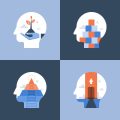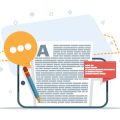Introduction to Career Assessments
Career assessments are valuable tools designed to help students better understand themselves and explore future career options. These assessments use a series of questions or activities to reveal individual strengths, interests, and personality traits. By providing insight into what makes each student unique, career assessments serve as the first step in building a meaningful career path.
What Are Career Assessments?
Career assessments come in various forms, such as quizzes, surveys, or online tests. They focus on identifying key areas like:
| Area Assessed | Description |
|---|---|
| Skills | Abilities and talents a student naturally excels at |
| Interests | Subjects or activities that capture a students attention |
| Personality | Personal traits that influence how students interact with others and their environment |
The Role of Career Assessments in Student Life
For many students, choosing a career can feel overwhelming. Career assessments break down this big decision into manageable steps by:
- Helping students discover new possibilities they may not have considered before
- Giving students language to describe their strengths and preferences
- Providing direction for selecting classes, extracurriculars, or part-time jobs that match their skills and interests
Why Start with a Career Assessment?
Starting with a career assessment is helpful because it gives students a clear picture of who they are before making important decisions about their future. Understanding personal strengths and interests helps students make more confident choices about college majors, internships, and long-term careers. In American schools, career assessments are often used by guidance counselors to support students in planning for life after graduation.
2. Types of Career Assessment Tools
In American schools, career assessments play a big role in helping students discover what they’re good at and what careers might be a good fit for them. There are several types of tools that counselors and teachers use to guide students on this journey. Here’s an overview of the most common ones:
Personality Inventories
These assessments help students learn more about their personal traits and how they relate to different career paths. They often ask questions about preferences, behaviors, and ways of interacting with others. By understanding their personality type, students can explore jobs where they might feel most comfortable and successful.
Popular Personality Assessments in Schools:
| Assessment Name | Main Focus | Example Careers Suggested |
|---|---|---|
| Myers-Briggs Type Indicator (MBTI) | Personality Preferences | Teacher, Engineer, Counselor |
| 16 Personalities Test | Personality Traits & Styles | Nurse, Designer, Analyst |
| Big Five Personality Test | Five Key Traits (OCEAN) | Scientist, Salesperson, Writer |
Interest Surveys
Interest surveys focus on what students like to do—whether it’s working with people, solving puzzles, or creating art. These tools match students’ hobbies and interests to possible career fields, making it easier for them to see where their passions could take them.
Common Interest Surveys Used:
| Name of Survey | Main Purpose | Sample Career Areas Matched |
|---|---|---|
| Holland Code (RIASEC) | Find Interests & Career Environments | Arts, Business, Technology |
| Kuder Career Interest Assessment | Identify Enjoyable Activities & Fields | Healthcare, Law Enforcement, Education |
| COPS Interest Inventory | Link Interests to Career Clusters | Agriculture, Marketing, Engineering |
Skills Evaluations
This type of assessment helps students figure out what skills they already have and which ones they may need to develop. Skills evaluations can include basic academic skills like reading and math or practical abilities like teamwork and problem-solving.
Examples of Skills Assessments:
- ACT WorkKeys: Measures workplace skills such as applied math and reading for information.
- YouScience: Combines aptitude testing with interest surveys to show where students natural talents align with specific careers.
- TASK (Test of Adult Skills and Knowledge): Often used for older students to measure job-related skills.
By using these tools, American schools aim to give students a clearer picture of who they are and what types of jobs might make them happy in the future. Each tool offers unique insights that help guide important decisions about education and career planning.

3. How Career Assessments Benefit Students
Career assessments are valuable tools that help students uncover their unique strengths, interests, and abilities. By using these tools, students can gain a clearer understanding of themselves and make smarter choices about their future careers.
Discovering Personal Strengths
Many students are unsure about what they do best. Career assessments offer insights into skills and talents that might not be obvious at first glance. For example, a student who enjoys solving puzzles may discover strong problem-solving skills, while another who likes organizing events might realize they have great leadership abilities.
Examples of What Assessments Can Reveal
| Assessment Type | What It Reveals | How It Helps Students |
|---|---|---|
| Personality Tests (e.g., Myers-Briggs) | Personal traits and preferences | Matches personality with suitable work environments |
| Interest Inventories (e.g., Holland Code) | Favorite activities and fields | Suggests career paths aligned with interests |
| Aptitude Tests (e.g., ASVAB) | Natural talents and skills | Identifies areas where students excel |
| Values Assessments | What matters most to the student | Helps find careers that align with personal values |
Making Informed Career Decisions
Counselors and teachers often use career assessments to guide conversations with students. These results provide a starting point for exploring different industries and job roles. Instead of guessing or choosing based on what’s popular, students can focus on options that truly fit them. This approach not only saves time but also helps students feel more confident about their choices.
Benefits in the American Context
In the United States, there is a strong emphasis on individuality and finding a fulfilling career path. Using career assessments supports this by empowering students to take charge of their future. Whether planning for college, vocational training, or entering the workforce right after high school, these tools offer practical information tailored to each students needs.
4. Interpreting Assessment Results
After taking a career assessment, the next important step is understanding what the results mean and how to use them in real life. Interpreting your assessment doesn’t have to be complicated. Here’s a simple guide to help students and educators make sense of the findings and turn them into practical actions.
Understanding Your Scores
Most career assessments provide scores or categories that reflect your interests, skills, values, or personality traits. These results might show you’re strong in areas like “creative thinking,” “working with people,” or “problem-solving.” The key is to look at these strengths as possible clues about where you might thrive in your future career.
| Assessment Area | What It Means | Possible Career Paths |
|---|---|---|
| Artistic/Creative | You enjoy creative activities and thinking outside the box | Graphic Designer, Writer, Marketing Specialist |
| Social/Helping | You like working with people and making a difference | Teacher, Social Worker, Healthcare Professional |
| Analytical/Investigative | You enjoy solving problems and analyzing information | Data Analyst, Scientist, Engineer |
| Practical/Hands-On | You prefer working with tools or physical tasks | Mechanic, Carpenter, Chef |
| Leadership/Organizing | You excel at organizing tasks or leading groups | Manager, Project Coordinator, Entrepreneur |
Making Sense of the Results
If your assessment shows high scores in several areas, don’t worry! Many careers blend different skills and interests. Use your top strengths as a starting point for exploration. It’s also helpful to talk with a school counselor, teacher, or mentor who can help you interpret your results in the context of your goals and experiences.
Actionable Steps After Getting Your Results
- Research Careers: Look up jobs that match your top strengths and learn what they involve day-to-day.
- Set Goals: Identify classes, clubs, or volunteer opportunities that let you try out new skills related to your strengths.
- Create a Plan: Work with a counselor or advisor to map out steps toward potential careers—like internships, job shadowing, or college majors.
- Reflect Regularly: Your interests may change over time. Review your results every year to see if your goals still fit.
Tips for Students and Educators:
- Be open-minded: Assessment results are not set in stone—they are guides to help you explore options.
- Avoid stereotypes: Any student can succeed in any field with passion and effort; don’t limit yourself based on test outcomes alone.
- Use local resources: Many U.S. schools offer career days, mentorship programs, and counseling services—take advantage of these opportunities to learn more.
5. Tips for Implementing Career Assessments at School
Effective Strategies for Educators and Counselors
Helping students discover their strengths through career assessments can be a rewarding process. Here are some practical tips for educators and counselors to make these tools accessible, engaging, and supportive for all learners.
1. Start with Clear Communication
Introduce career assessments by explaining their purpose in simple language. Let students know that these tools aren’t tests they can “pass” or “fail,” but rather guides to help them learn more about themselves and their future possibilities.
2. Choose the Right Assessment Tools
| Assessment Tool | Best For | Key Features |
|---|---|---|
| Myers-Briggs Type Indicator (MBTI) | High school & college students | Personality-based, easy to discuss results |
| Holland Code (RIASEC) | Middle & high school students | Focuses on interests, career match suggestions |
| StrengthsFinder | High school seniors & above | Highlights individual strengths, positive focus |
| Naviance Career Assessments | K-12 students (where available) | Integrated with school systems, personalized planning |
3. Make it Interactive and Engaging
Create a relaxed environment where students feel comfortable sharing their thoughts. Use group discussions, role-playing activities, or digital platforms to keep students involved and interested in the process.
4. Support Diverse Learners
Every student is unique. Adapt your approach to meet different learning styles, languages, and cultural backgrounds:
- Visual learners: Use charts, infographics, or videos to explain assessment results.
- Linguistic learners: Offer written explanations and encourage reflective journaling.
- Cultural sensitivity: Choose examples and career suggestions that reflect the diversity of your student body.
- Bilingual support: Provide translated materials if needed.
5. Encourage Reflection and Goal Setting
After completing an assessment, guide students to reflect on what they learned about themselves. Help them set short-term and long-term goals based on their interests and strengths, emphasizing that career exploration is a journey.
6. Involve Families When Possible
If appropriate, share information with families so they can support their child’s self-discovery and planning at home. Host workshops or send home resources that explain the value of career assessments.


